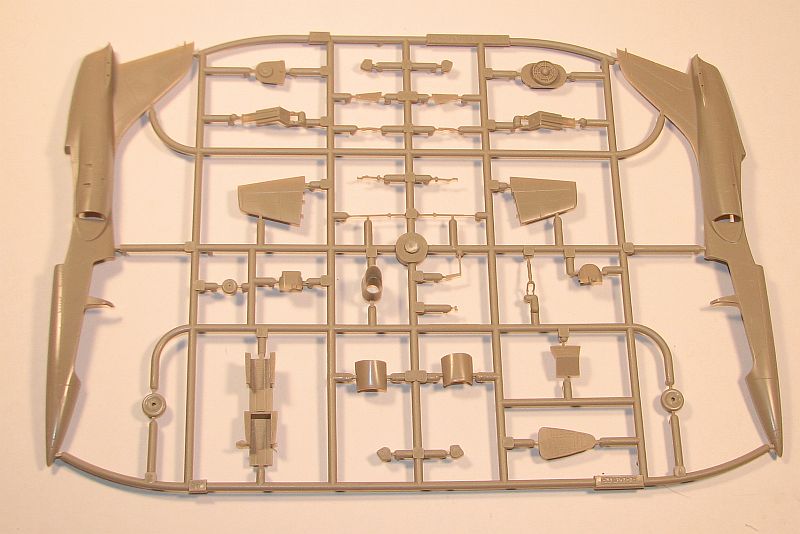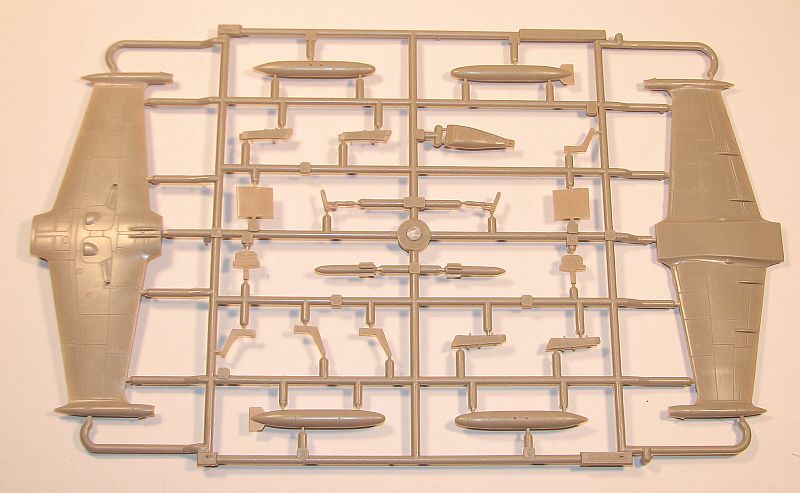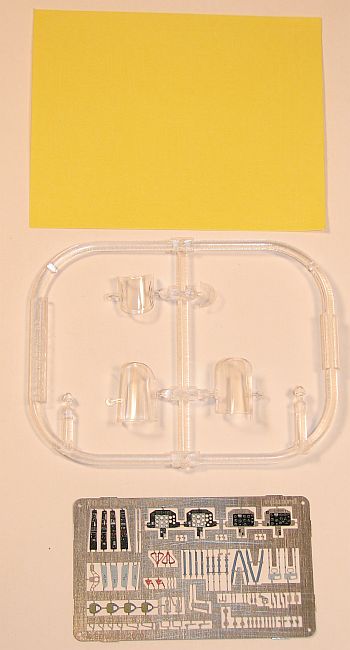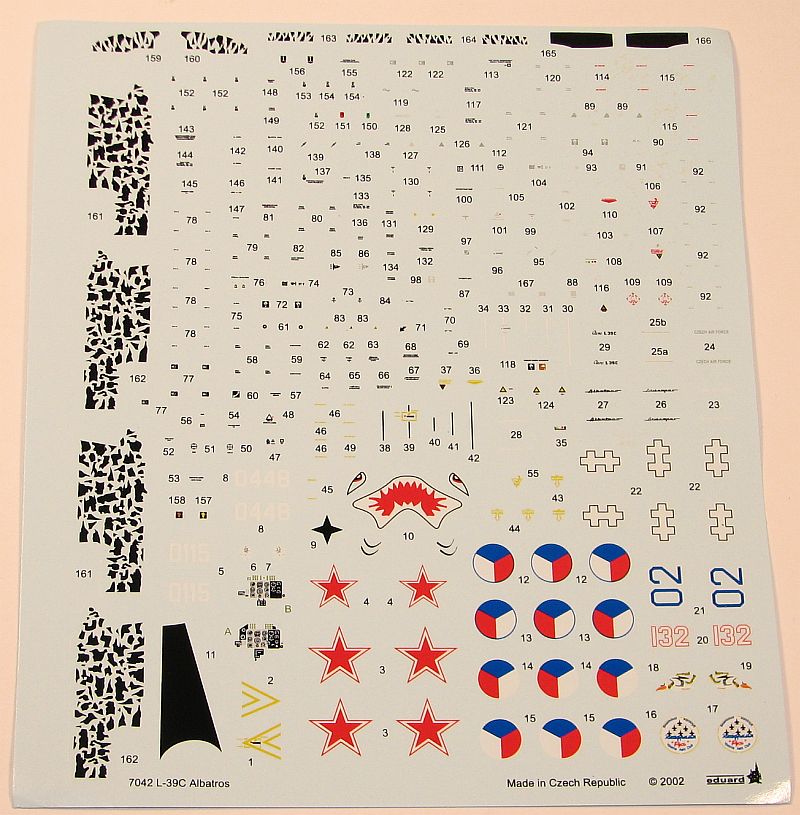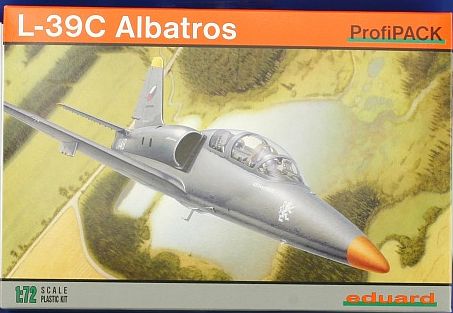
Eduard 1/72 L-39C Albatros
By Matt Bittner
Introduction
According to Eduard's instructions, the "Aero L-39C Albatros is one of the most popular training jets in the world. Produced in large series since the early 70's, these aircraft are still in operation service in lots of countries, including Russia and Iraq. In the 70's and 80's it was the standard trainer in most Warsaw Pact air forces. It was produces as the L39C (trainer), L-39ZA/ZO (flight ground attack) and L-39V (target tug)."The Kit
The Eduard 1/72 L-39C - kit #7042 – consists of 57 injected pieces molded in tan and 5 clear pieces, including canopies and landing lights. Eduard also provides a fret of pre-colored photoetch (mostly cockpit pieces) and a set of masks. Decals are up to Eduard's usual high standards and consist of the following schemes:
- Training Flight, 1st "Tiger" Squadron, 11th Fighter Regimane, CzAir Force, Zatec Air Base, 1994
- 1st Tactical Squadron, 4th Special Forces Air Base, Caslav, Czech Air Force, 2002 (be sure to use "special characters")
- Aerobatic Team Rus (Russia), Vjazma Aero Club, ex DOSAAF, Russia, 1992
- 11th Squadron, Lithuanian Air Force, Siauliai Air Base, 1997
In an unusual twist – one I'm beginning to adhere more and more to – is the installation of the ejection seats after the fuselage halves are assembled. In fact, I'll go further – don't add the ejection seats until right before painting, if possible. I'm working on a model now where I glued the ejection seat in the tub and the tub in the fuselage prior to the rest of the main assembly. Unfortunately that meant I have broken off the "small thingies on the headrest" (a technical term) due to the constant handling of the model. If possible, wait until close to the end before gluing the seats in.
Now the intakes and splitter plates, horizontal tail surfaces and wings are glued together and glued to the fuselage. After this step you'll have a model that closely resembles the L-39C. The rest of the steps (adding the landing gear, stores, antenna, etc.) should not be accomplished until after masking and painting, otherwise a lot of these smaller items will be lost.One area of confusion. I mentioned that Eduard provide masks for the model. Unfortunately, the instructions do not show how the masks should be used. Sure, you can figure out the masks for the canopy and the wheels, but there are masks for more than just those items. It would have been nice to see something included for what the other masks are for.
Conclusion
This is a very nice kit that should build into a very nice model, especially with the photoetch Eduard provides. If you can live without knowing how to use the "other" masks, then by all means pick up this kit if you want to build a 1/72 Aero L-39C Albatros. I do have a request, though. If anyone knows how to convert Eduard's L-39C into an L-39ZO I would like to know that.
My thanks to Eduard for the review Albatros. Albatros... ALBATROS... (Oops, sorry, Monty Python overcame me.)

